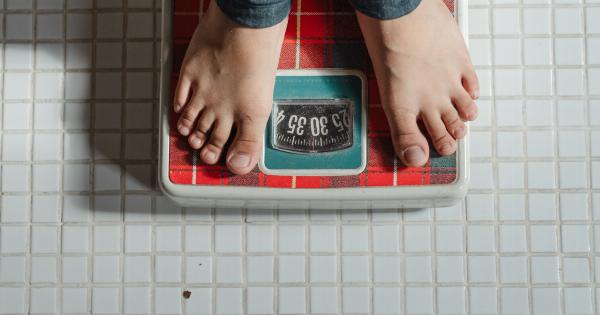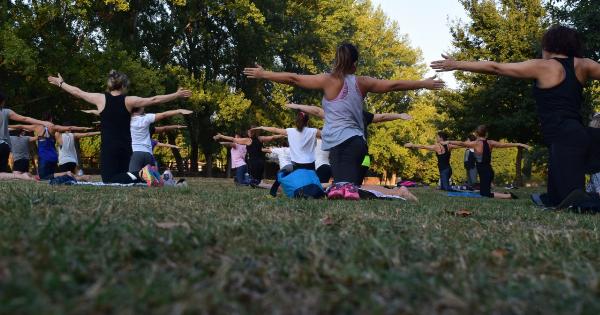While many people strive to achieve a lean physique, it’s important to remember that being too lean can have negative consequences for your health.
A lean body can certainly be a desirable trait, but there’s a fine line between a healthy, fit physique and a body that’s too lean.
There are many factors that can contribute to a lean physique, including genetics, diet, exercise, and even stress. However, in general, becoming too lean is often a result of over-exercising or under-eating.
These practices can lead to a host of health problems, including weakened immune system, decreased bone density, irregular menstrual cycles, and even organ failure. That’s why it’s important to maintain a balanced approach to your fitness routine and your diet.
In this article, we’ll discuss five strategies you can use to avoid becoming too lean, while still maintaining a healthy, fit physique.
Strategy 1: Focus on Building Muscle Mass
One of the best ways to avoid becoming too lean is to focus on building muscle mass. Adding muscle to your body can help you achieve a toned, fit appearance, while also improving your overall health and fitness.
To build muscle mass, you’ll need to focus on strength training exercises, such as weight lifting or bodyweight exercises. These exercises target your muscles, helping to stimulate growth and improve strength.
Aim to perform strength training exercises at least two to three times per week, using weights or resistance that challenge your muscles.
Be sure to also incorporate plenty of rest and recovery into your routine. Your muscles need time to heal and rebuild after a workout, so make sure you’re giving them time to do so.
This means taking rest days, getting plenty of sleep, and fueling your body with the nutrients it needs to support muscle growth.
Strategy 2: Increase Your Caloric Intake
If you’re trying to achieve a lean physique, it’s easy to fall into the trap of under-eating.
While it’s important to maintain a calorie deficit to lose weight, going too far below your daily calorie needs can actually have negative consequences for your health and fitness.
To avoid becoming too lean, it’s important to make sure you’re fueling your body with enough calories to support your activity level and maintain your muscle mass.
This means calculating your daily calorie needs based on your age, gender, weight, and activity level, and making sure you’re consuming enough calories to meet those needs.
Be sure to also focus on consuming nutrient-dense foods, such as whole grains, lean protein, fruits, and vegetables.
These foods provide your body with the vitamins, minerals, and macronutrients it needs to function properly and support your fitness goals.
Strategy 3: Incorporate Cardiovascular Exercise
While strength training is important for building muscle mass and maintaining a healthy physique, cardiovascular exercise is also important for overall health and fitness.
Cardiovascular exercise helps to improve heart health, boost metabolism, and burn calories.
To avoid becoming too lean, it’s important to incorporate cardiovascular exercise into your routine in addition to strength training.
Aim to perform at least 30 minutes of moderate-intensity cardiovascular exercise, such as jogging, cycling, or swimming, at least three to four times per week.
However, it’s important to avoid overdoing it with cardiovascular exercise. Too much cardio can actually lead to muscle loss and a decrease in metabolism, making it harder to achieve a fit, toned body.
Aim for a balanced approach to your fitness routine, incorporating both strength training and cardiovascular exercise.
Strategy 4: Get Enough Rest and Recovery
As we mentioned earlier, rest and recovery are crucial for building muscle mass and maintaining a healthy, fit body.
Without adequate rest, your muscles won’t have time to heal and rebuild, and your body can become overstressed, leading to health problems and decreased fitness.
Be sure to incorporate rest days into your fitness routine, giving your body time to recover from workouts. This means taking one to two days off from exercise per week, and making sure you’re getting enough sleep each night.
It’s also important to fuel your body properly with the nutrients it needs to support recovery.
This means consuming plenty of protein, healthy fats, and complex carbohydrates, which provide your body with the building blocks it needs to repair and rebuild muscle tissue.
Strategy 5: Monitor Your Progress
Finally, it’s important to monitor your progress and make adjustments to your routine as needed.
This means tracking your workouts, measuring your body composition, and adjusting your diet and exercise routine as necessary to achieve your fitness goals.
Be sure to track your progress using measurements such as body fat percentage, waist circumference, and strength gains. This can help you identify areas where you may need to make adjustments to your routine.
If you find that you’re becoming too lean, or that your progress has stalled, it may be time to re-evaluate your routine and make adjustments.
This could mean increasing your calorie intake, changing up your exercise routine, or seeking the guidance of a fitness professional or nutritionist.
Conclusion
Achieving a healthy physique requires a combination of exercise and a balanced diet. While a lean body can be a desirable trait, it’s important to maintain a balance and avoid becoming too lean.
By focusing on building muscle mass, increasing your caloric intake, incorporating cardiovascular exercise, getting plenty of rest and recovery, and monitoring your progress, you can achieve a fit, healthy physique without sacrificing your health or well-being.




























